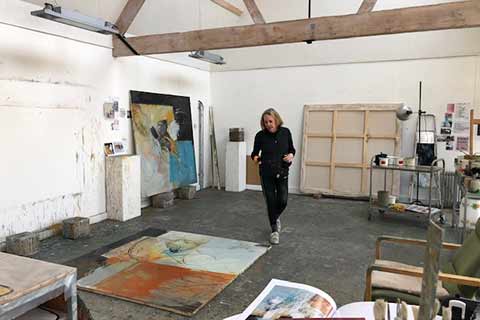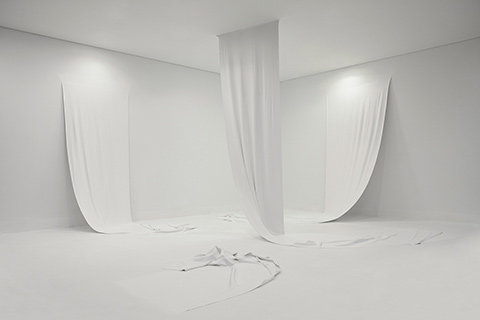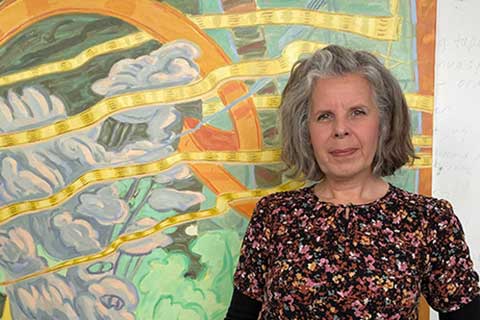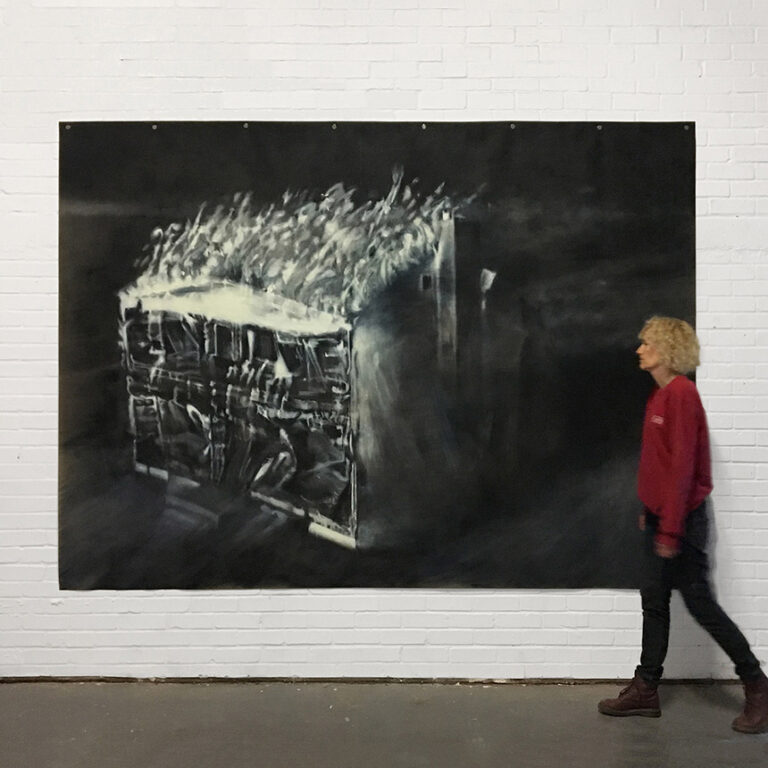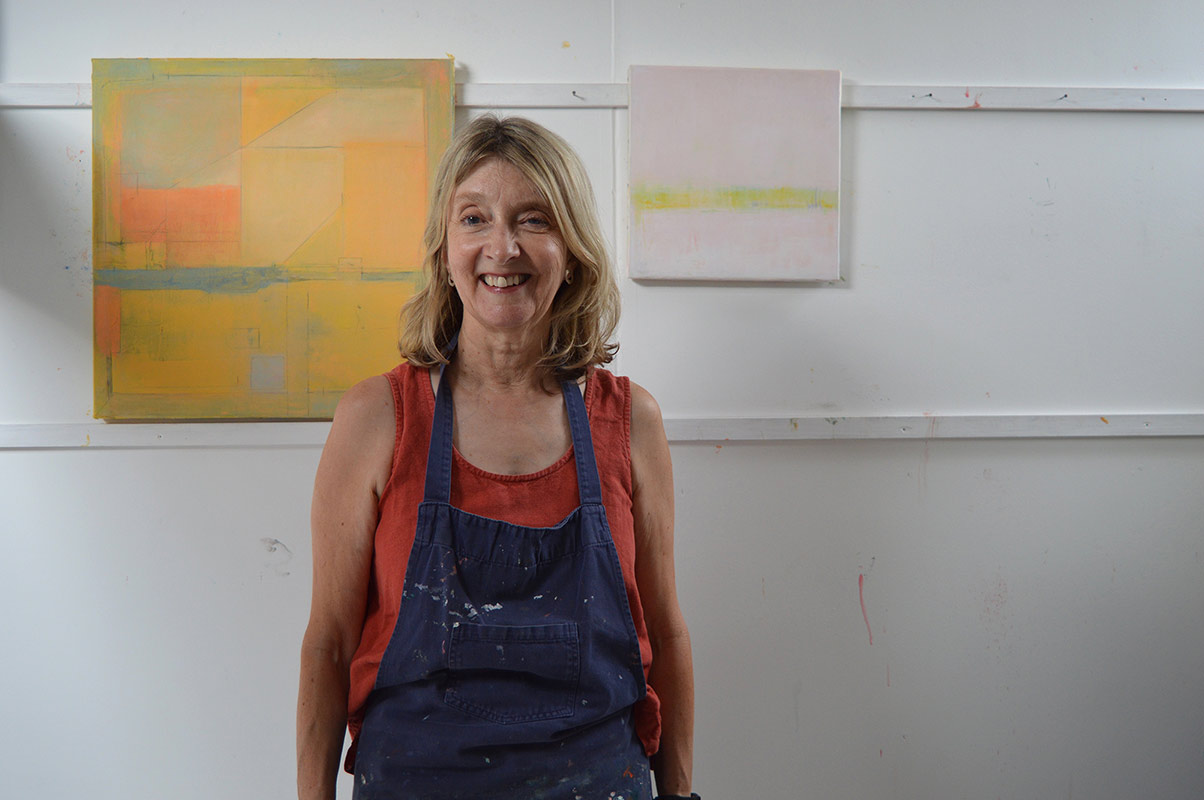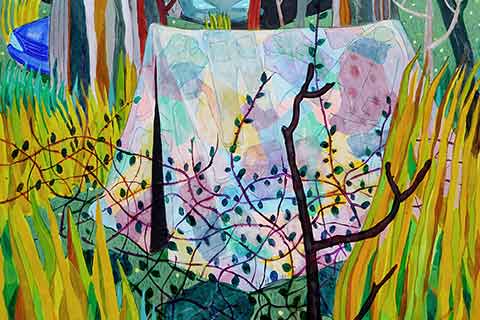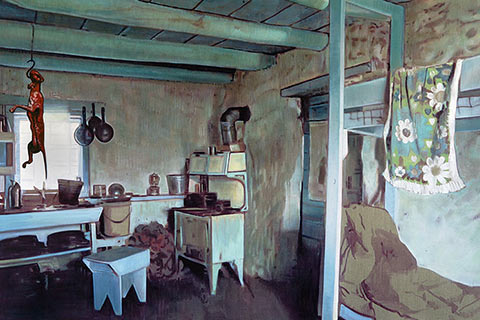Day Bowman: Artist of the Month
Artist of the Month January 2022:
Day Bowman, selected and interviewed by Paul Newman for CBP.
CBP begins 2022 talking with Day Bowman about her painting practice and about her series ‘Studies for Seaside Citadels’. Day Bowman say’s:
‘Growing up in a holiday destination, small, seaside town it is not surprising that much of my work has referenced the sea, the beach and the littoral. In this series of paintings I find that the canvases echo the marks, lines and shapes that we made in the wet, grey sand of my home town beach: thus the canvas becomes the beach that acted as the canvas of my child-hood..’
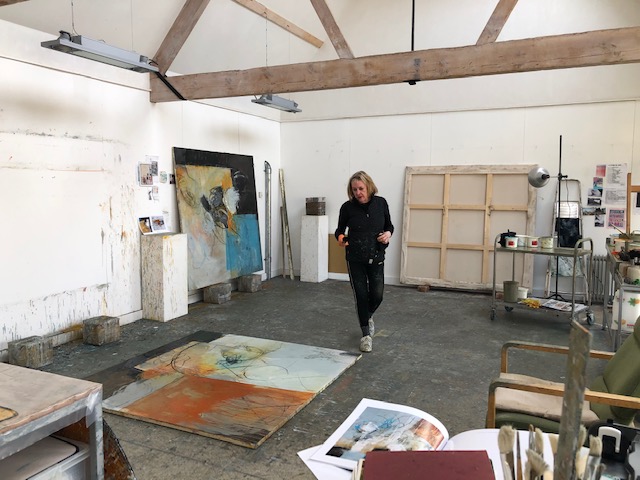
CBP: On initial encountering of your paintings your distinctive style resists clearly defined representational elements and cultural motifs. It could be interpreted as a purer form of abstraction. Have you always made paintings this way?
Day Bowman: I disagree: I see my work as very much growing out of the physical world around us. Take, for example, the notion of a protective space such as a citadel, fort or castle, as seen in my recent body of work, these places do actually exist and I responded to their shape, their mass, their presence by recording what and how I saw them up and down the south coast of England. If you look hard you will see a repeat of the circle, the castellation and directional line throughout all these works that references their essential elements.
And that, I guess, is the pivotal word: the essence of a place, a feeling, a shape and colour that is very much part of my work. I get bored with the narrative in the visual arts much like I love the short-hand of poetry where each syllable, each word and each phrase can bring about a distillation, a beauty that prose so often cannot achieve.
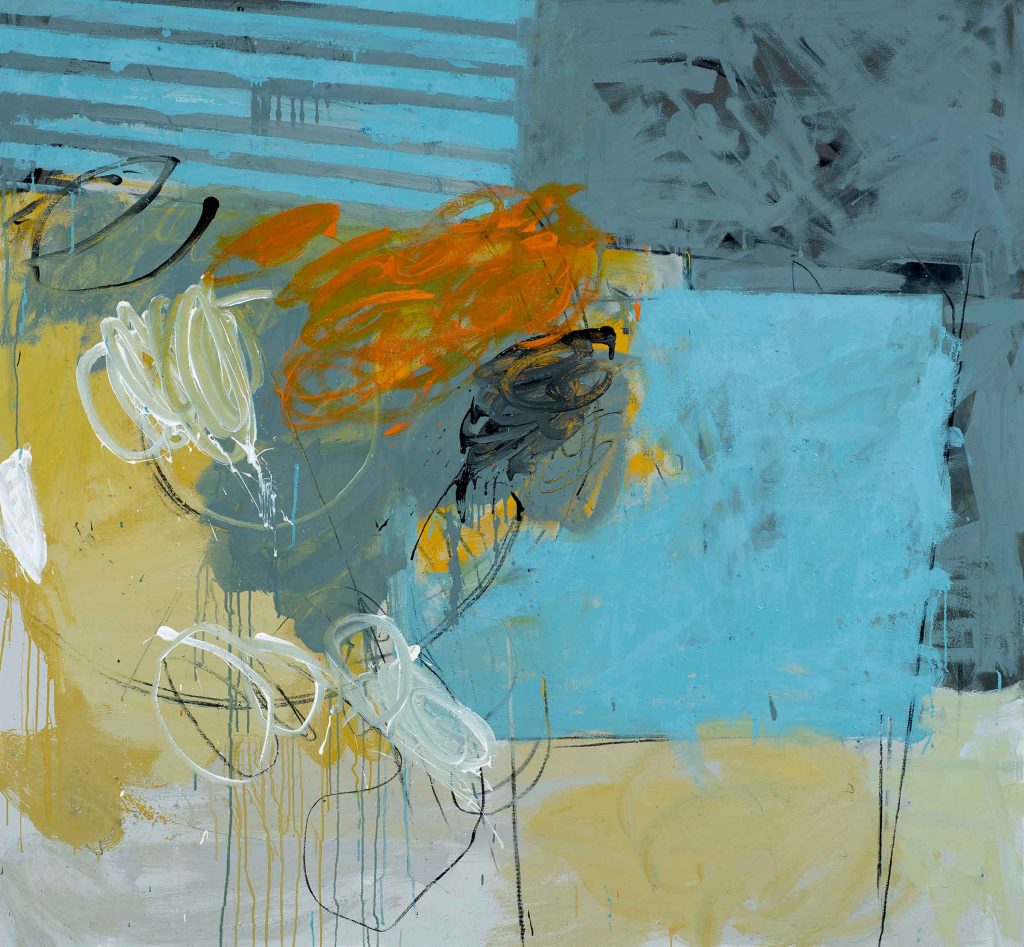
CBP: These are very physical paintings, emitting speed and energy. Is this a reflection of their, making? Do you always paint quickly, or do you slow down and paint at different speeds?
DB: Ha ha, I love the idea that I am slapping on the paint is some kind of frenzy….! So, if you were to see the works IRL you would notice that they are made up of many layers of paint, often sanded back and then more paint reapplied over time. I remember once stating: a painting can happen in a day and, for me, that is very much what happens with these works but there is also a history as I work through the detritus in an attempt to reach a clarity, a purity, if you like, of thought and feeling.
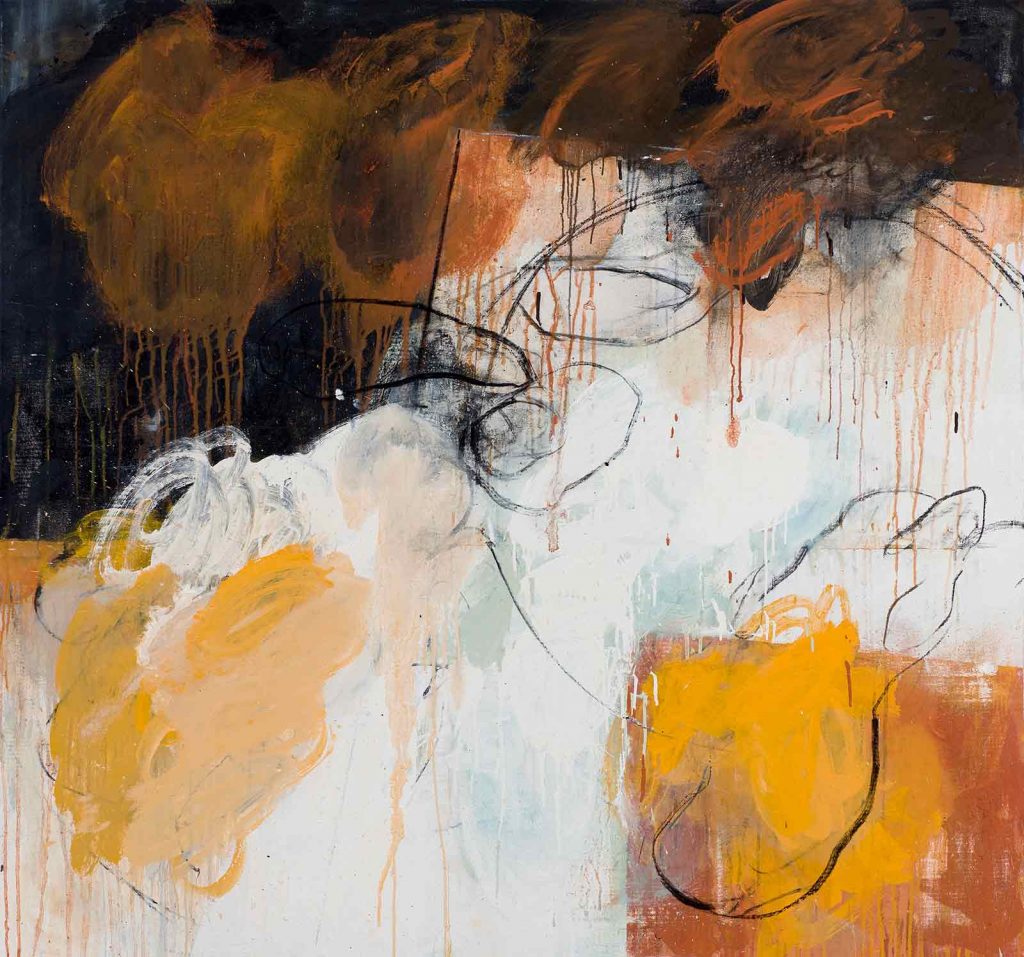
CBP: You talk about the inspiration of growing up in a coastal town; wet sands and scarred stone. As a viewer you get the essence of this translated, a conversation between source influences and paint medium. Can you discuss this connection in terms of material, surface and colour palette?
DB: Well, if anyone has visited the Somerset coast in winter they will understand my choice of palette for many of these works. It is a northern European palette and I celebrate it. I also celebrate the whole business of painting by stretching my own canvases, and preparing them in the traditional way with two coats of rabbit skin glue followed by one coat of oil-based primer. I work in oils on canvas because they dry slowly and allow me to rub and scrub out work the next day, if I so choose. And then there’s the smell of oils and turpentine that makes for a heady mix in the studio each day!
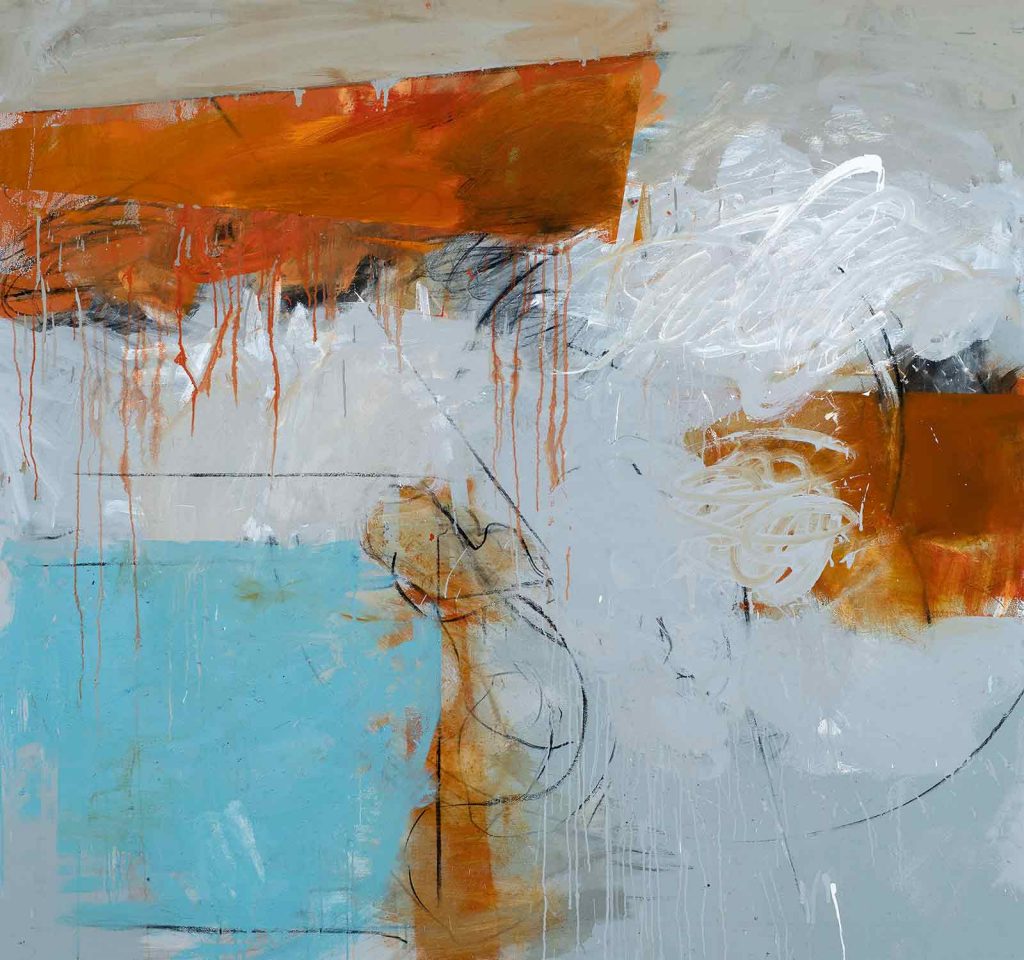
CBP: Drawing appears to be an essence; the scribbled exploratory line is all over your paintings in both paint and charcoal. Are painting and drawing intertwined, or is there a separation? For example, do you work with sketches and preparatory studies? Also the Citadel series of works in this article are smaller works on paper. Will these inform other, larger paintings on canvas?
DB: I see no separation between painting and drawing. I rarely work from a preparatory sketch or drawing and if I do the painting always goes off in a direction of its own.
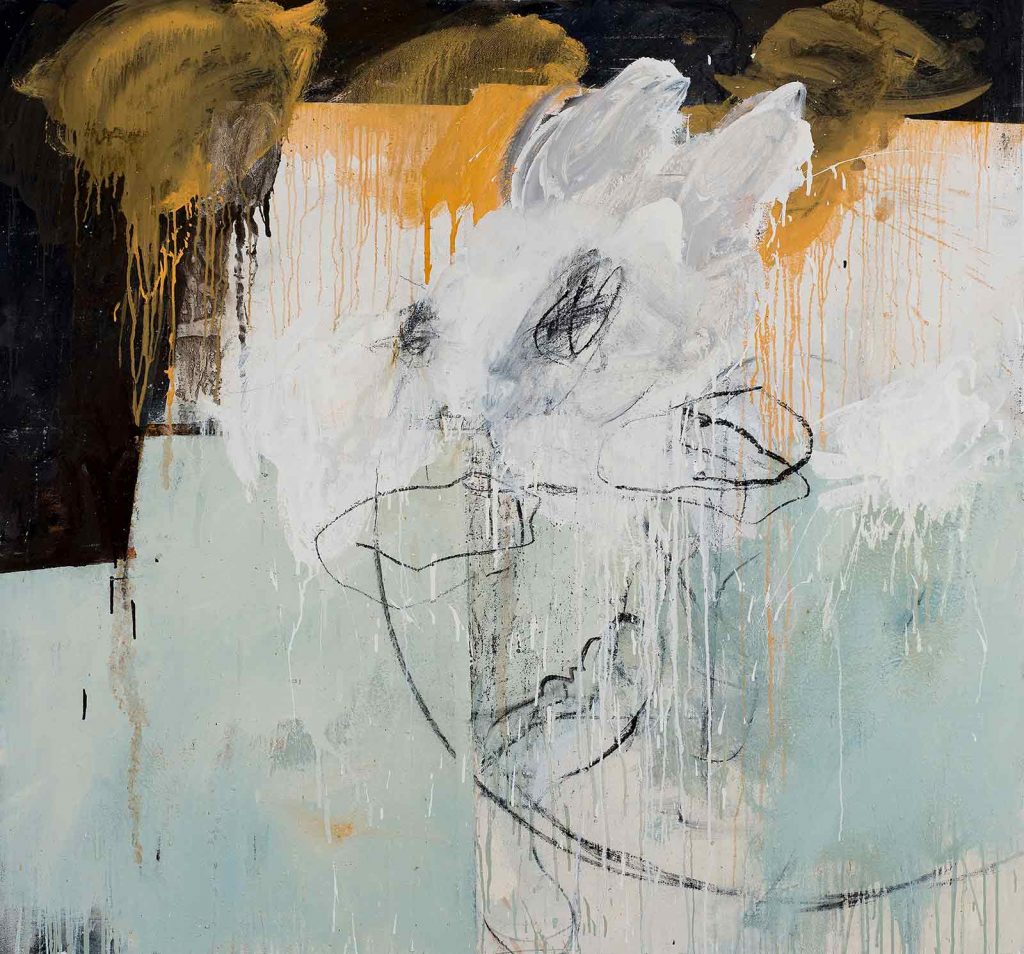
CBP: This article includes work from both The Citadel and Fortress series. Can you talk about a little about the underlying themes in these two groups of work?
DB: The Citadel and Fortress series are one and the same: in these works I have been reflecting on how Britain sees itself as a nation: a nation apart or part of a global community? During last summer I visited a number of south coast seaside towns and was struck by the shapes of fortress constructions from castles to Martello Towers and the abandoned pill boxes of WW2. If they haven’t been saved by English Heritage or converted into smart holiday homes they have fallen into disrepair and ruin. I like the shapes and lines of such buildings and have employed them in these paintings; for me they echo the small sandcastles we patted out on the wet sands during the long summer holidays.
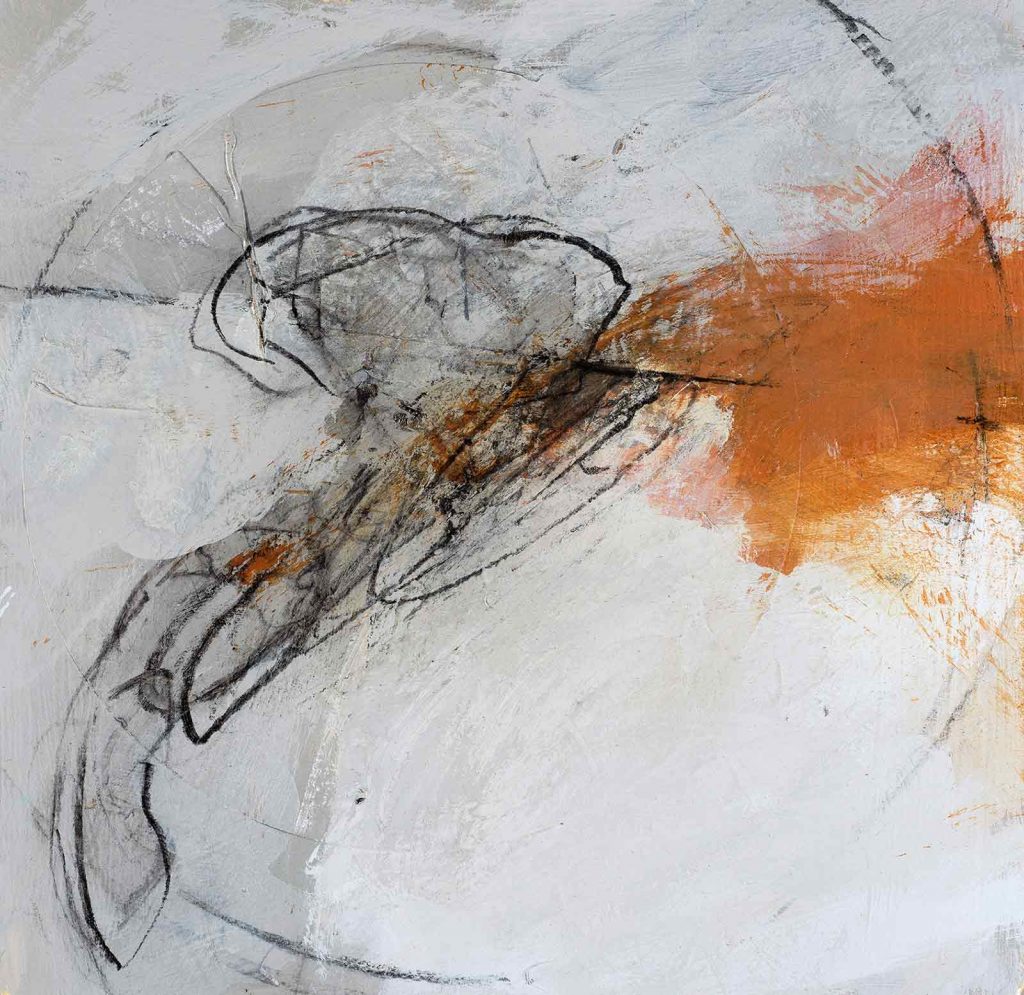
CBP: Your statement discusses broader social and political themes, including bigotry and intolerance. These themes could be connected to a strong sense of an independence of spirit emanating from the vigorous energy your work has. Could you talk about this notion as a sensibility of the work and in relation to you the artist?
DB: Well, the one sure thing is that I am not a political painter but we live in strange political times both nationally and globally and I don’t think any artist can create in a vacuum or ignore what is going on around them.
On a personal level I have particular empathy with those seeking a safe haven on these shores as I experienced, briefly, what it is to be denied entry when I returned to the UK with my newly adopted baby from El Salvador. This border detention showed me just how powerful the state is and how our rights as a citizen can be taken from us at a moment’s notice.
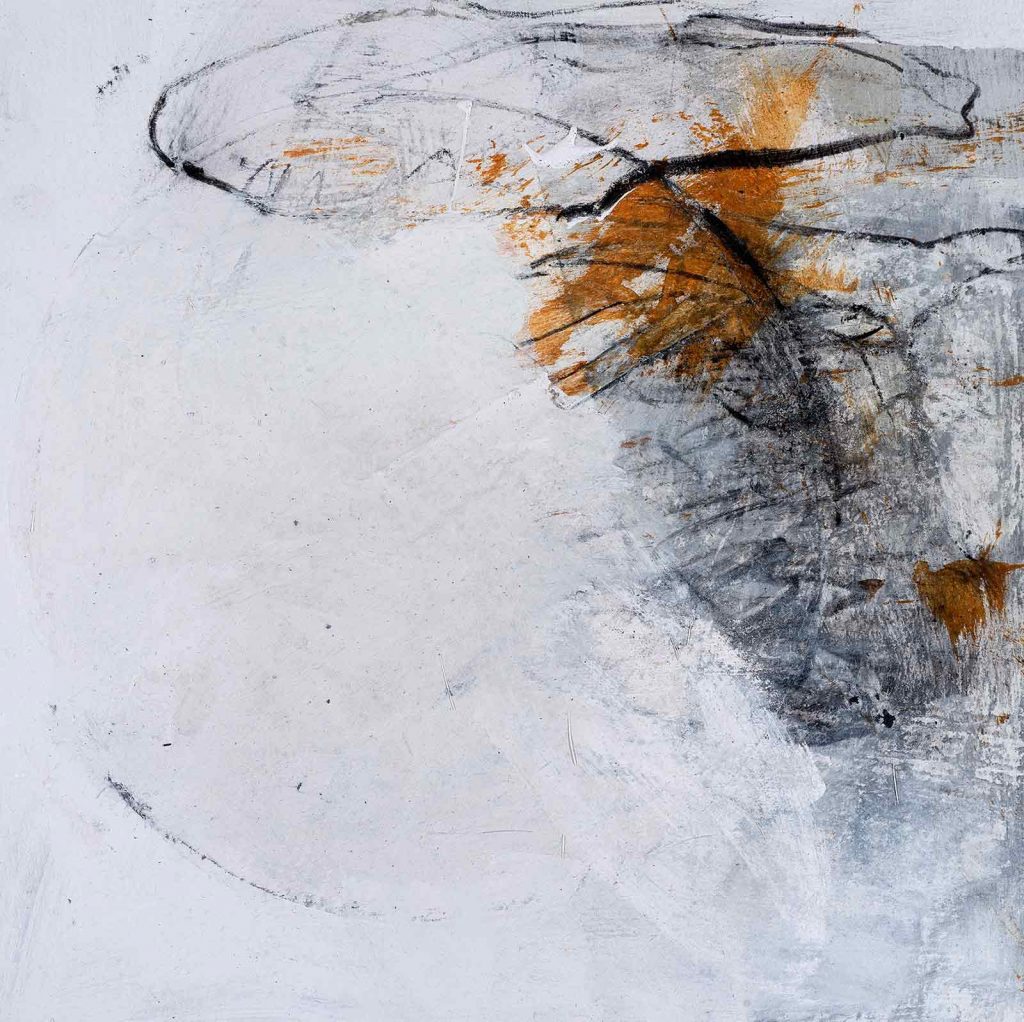
CBP: Can you discuss the journey and end point of your paintings in terms of how long they take to make? Like re walking the coastal routes that have inspired you do you revisit, rework over previously ‘finished’ and exhibited works?
DB: As I mentioned earlier, I love working in oils but this does mean that they take a long time to dry, especially in the winter months, so I find that I have two, maybe three large works on the go at the same time to allow at least the surface paint to dry out a little. Alongside these large works I often doodle on paper, card or small canvases that allows me to free up the mark-making and paint quickly, yes, even more quickly than on the large scale!
There are times when works just don’t seem to be going anywhere and I have to turn the canvas to the wall; some months later I will sand down the surface to provide a key for a new layer of paint. Most exhibited works are left as ‘done’ and I feel I have nothing more to say although there are a couple from a recent show that I’d very much like to work over!
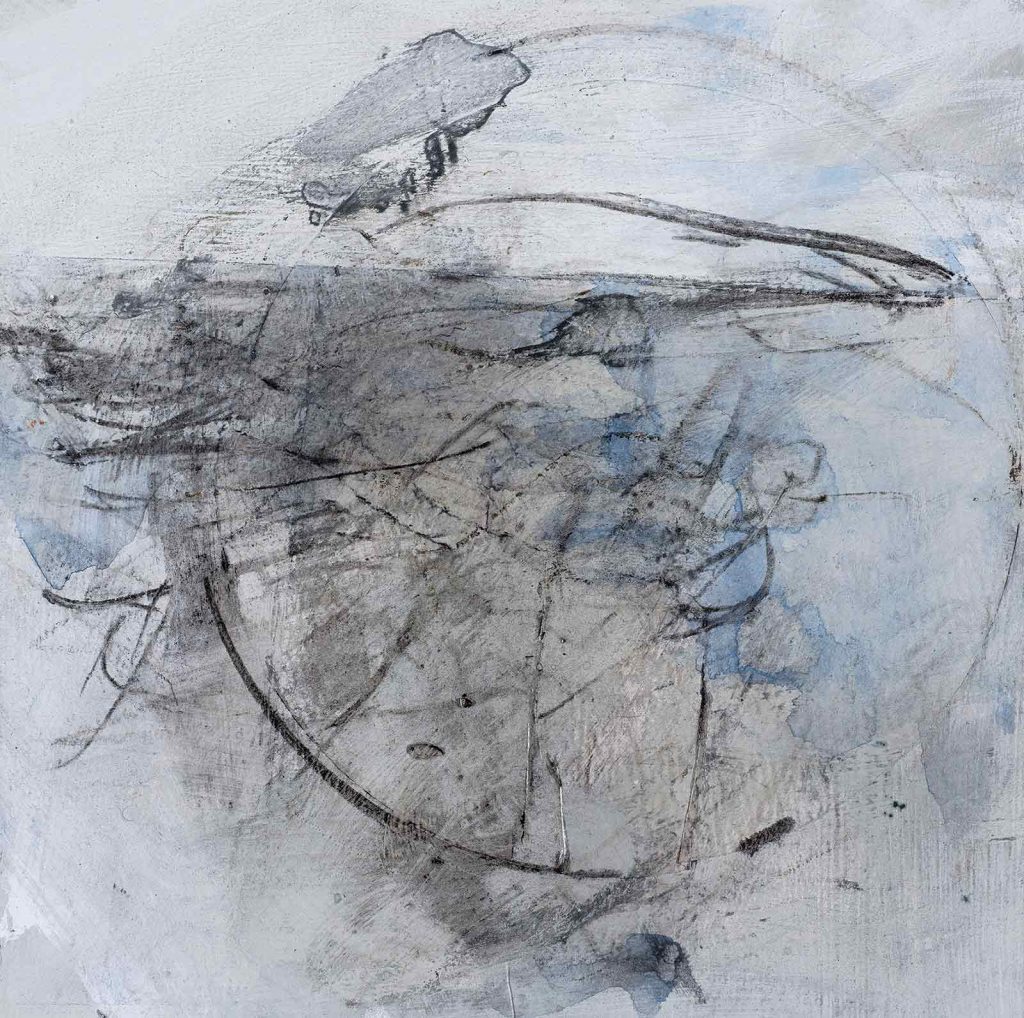
CBP: What is your current studio routine and what are you working towards at the moment?
DB: I think women have a far more disciplined approach to their studio routine and this must surely be a result of being mothers and tied to their children’s needs. I find I still stick to this routine although my son has grown up and left home! Each morning I go to the studio around 8.30 am and work through to 1 pm, take a break, wash my brushes and close up for the day and that is the routine seven days a week, pretty much.
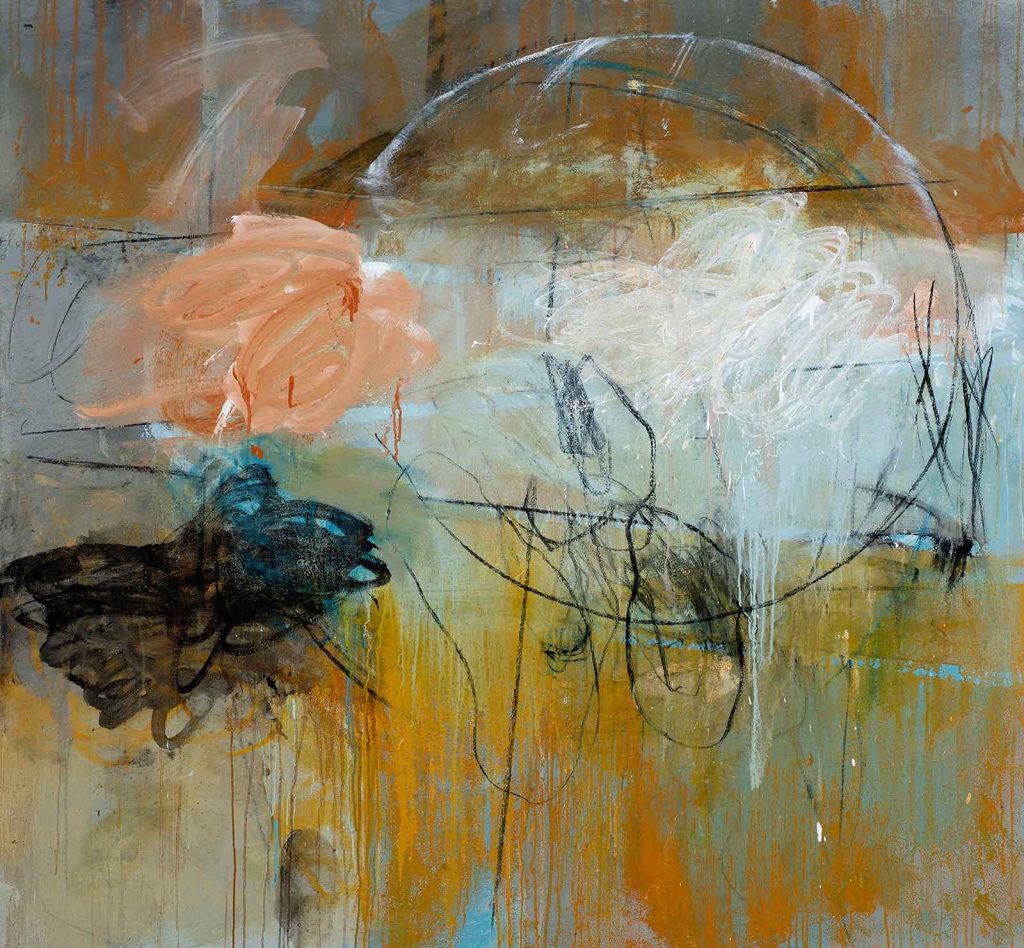
After my solo show at Bermondsey Project Space earlier this year I found it took me a long time to get back into the rhythm of working; maybe it was exhaustion. I feel that I need to work through the blocks rather than take time out and it was about six weeks ago things started to make a bit more sense; I have now regained that sense of enjoyment at mixing my paints each morning and having fun. In the new work I am continuing to explore ideas of borders and boundaries which is such a primal human need and activity.
In June 2021 Day Bowman’s latest body of work Seaside Citadels was exhibited at Bermondsey Project Space. Other recent solo exhibitions include: 2021 Here and There: Daile Galerie Berlin, 2020 Plashy Places: Carey Blyth Gallery Oxford, 2019 Tearing up the Rule Book, Westminster Reference Library London & Atelier Melusine France
In 2019 she won first prize in the Anima Mundi Painting Prize where her work was on exhibition in the 2019 Venice Biennale. Day also won first prize in the Bath Arts Open and first prize in the inaugural Wales Contemporary. In 2020 she was awarded the Winsor & Newton prize for her work in the Royal Institute of Painters in Watercolours.



